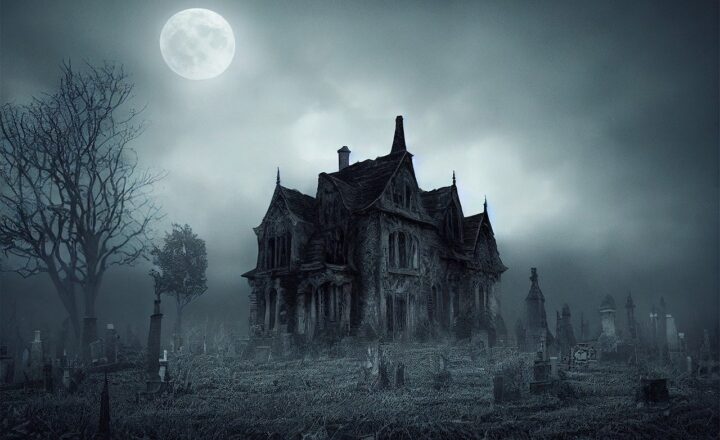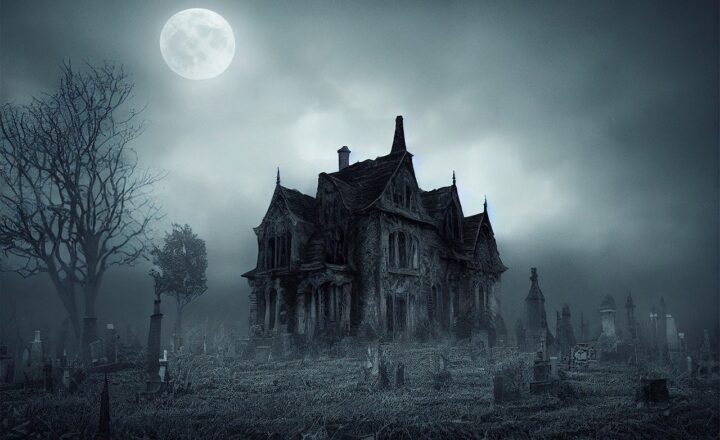The Role of Horror Movie Directors in Crafting Iconic Cinematic Frights
November 16, 2024

Horror is a genre that has fascinated and terrified audiences for generations, and its success often hinges on the vision of the director. The director’s ability to create suspense, invoke fear, and elicit emotional responses is essential in crafting iconic horror films that remain etched in our memories. The role of horror movie directors is not merely about piecing together footage; it involves an intricate dance of storytelling, atmosphere, and character development. This article delves deeply into how horror movie directors shape the genre and create unforgettable cinematic frights.
1. Setting the Scene: Visual Style and Atmosphere
One of the essential tasks of a horror movie director is to establish a visual style that complements the film’s narrative. The atmosphere in horror films is integral to creating tension and fear. Directors use various techniques, including lighting, camera angles, and color palettes, to evoke specific emotions.
For example, Alfred Hitchcock, renowned for his mastery of suspense, utilized shadows and stark lighting contrasts in classics like “Psycho” to create a disconcerting viewing experience. The iconic shower scene remains one of cinema’s most memorable moments, largely due to Hitchcock’s cleverly orchestrated visuals and editing strategies. Similarly, directors like John Carpenter in “Halloween” intertwined minimalist scores with simple yet effective camera work to generate fear and enhance anticipation.
Directors also select locations that evoke fear—abandoned houses, dense forests, or isolated towns become characters in their own right, contributing to the overall eerie vibe of the film. Each element in the frame becomes a tool for storytelling, and the director carefully crafts these components to heighten the suspense.
2. The Sound of Fear: Crafting Audiovisual Experiences
Sound plays a pivotal role in any horror film, and directors often work closely with sound designers to ensure that the auditory experience complements the visual elements. From eerie soundscapes to sudden loud noises, the director’s vision guides how sound elevates fear.
Figures like Wes Craven, known for the “A Nightmare on Elm Street” franchise, leveraged sound to manipulate audience emotions. The haunting soundtracks and unsettling sound effects contribute significantly to the psychological terror portrayed on screen. The jarring ring of the telephone or the chilling sound of a rustling bush creates an auditory atmosphere that immerses viewers in the narrative.
Moreover, directors also harness silence effectively. The absence of sound can sometimes be more potent than the loudest screams, as it builds anticipation and heightens the viewers’ awareness, prompting them to remain on edge. Every sound, or lack thereof, serves a purpose and amplifies the overall experience.
3. Pioneering New Concepts: Breaking Ground in Horror
Innovation is vital for horror filmmakers, as audiences often seek fresh narratives and ideas. Successful horror movie directors push boundaries and introduce new concepts that redefine the genre.
Directors like Jordan Peele have emerged with groundbreaking works that explore social themes wrapped in horror elements. His film “Get Out” combined sharp commentary on race and privilege with psychological horror, showcasing how directors can elevate the genre beyond mere scares. By intertwining social issues within horror narratives, Peele ushered in a new wave of storytelling that challenges the genre’s conventions.
In contrast, films like “Hereditary” from Ari Aster redefined psychological horror by focusing on familial trauma and grief. This innovative approach to horror shifted the director’s role to one of a storyteller who delves into the human psyche, exploring the complexities of relationships and emotions. Aster’s mastery highlights how directors can transform traditional horror tropes to create a visually and emotionally resonant experience for viewers.
4. Character Development: Creating Memorable Villains and Protagonists
In horror films, characters often undergo significant transformations, and the director’s influence on character development is profound. A skilled horror director understands that relatable or complex characters can enhance the audience’s emotional investment, allowing viewers to empathize with their struggles.
Iconic directors, such as Stanley Kubrick, famously crafted unforgettable characters like Jack Torrance in “The Shining.” Kubrick’s meticulous direction and actor guidance culminated in a chilling portrayal, making viewers question his humanity as he descended into madness. By elevating the character’s psyche, the fear becomes less about external threats and more about the darkness within.
Likewise, directors often innovate villain archetypes that resonate with audiences. The portrayal of villains like Freddy Krueger or Michael Myers in films like “A Nightmare on Elm Street” and “Halloween” has evolved under the guidance of visionary directors. These directors cultivate empathy for their characters, inviting viewers to examine what lays within every human being’s capacity for evil.
5. Collaborating with Talent: The Essential Role of the Cast and Crew
The horror genre thrives on collaboration. Directors work closely with writers, cinematographers, production designers, and special effects teams to weave a story that captivates and terrifies audiences. A great horror director understands the importance of assembling a talented crew and refining performances to strengthen the film’s impact.
For instance, James Wan, known for films like “The Conjuring” and “Insidious,” has consistently collaborated with screenwriters and actors who share his vision for crafting suspenseful narratives. Wan’s emphasis on strong performances has often resulted in memorable characters, further cementing his stature as a leading director in modern horror.
Moreover, directors often involve actors deeply in the creative process, allowing them to contribute to character development and scene execution. This collaboration results in performances that feel authentic and emotionally charged, enhancing the horror experience.
6. Mastering the Art of Suspense: Building Tension Effectively
Creating a successful horror film hinges on the ability to build suspense. Horror movie directors have honed the craft of pacing, using various cinematic techniques to manipulate audience emotions over time. Directors often employ editing techniques, strategic plot reveals, and atmospheric shifts to maintain tension.
David Fincher, with films like “Se7en,” exemplifies suspense mastery through a meticulous storytelling approach. His ability to gradually unveil the film’s mysteries keeps viewers on the edge of their seats, illustrating how directors play a significant role in shaping the viewer’s emotional journey.
Pacing is also crucial in horror. By knowing when to show restraint or unleash terrifying scenes, directors create a rollercoaster of emotions that keeps audiences engaged. In summary, these directors possess an uncanny knack for leveraging pacing to enhance the overall horror atmosphere.
Conclusion: The Visionaries Behind the Frights
The role of horror movie directors extends beyond the mere execution of filming; it intertwines artistry, psychology, and storytelling. Through visionary direction, these filmmakers elevate horror as an art form, crafting iconic cinematic experiences that resonate with audiences long after the credits roll. By setting the scene with effective visuals, creating chilling soundscapes, innovating narrative possibilities, and nurturing character development, horror directors are the unsung heroes behind the on-screen frights.
As horror continues to evolve, the impact of talented directors remains paramount. Their unique contributions ensure that the genre not only terrifies but also invokes thought and emotion. Exploring the intricate relationship between directors and horror reveals how essential their vision is in crafting unforgettable cinematic scares.
If you have ever marveled at the impact of horror on your psyche, take a moment to appreciate the directors’ artistry that makes it all possible. They are the architects of our fears, guiding us through the darkness with both skill and insight.







